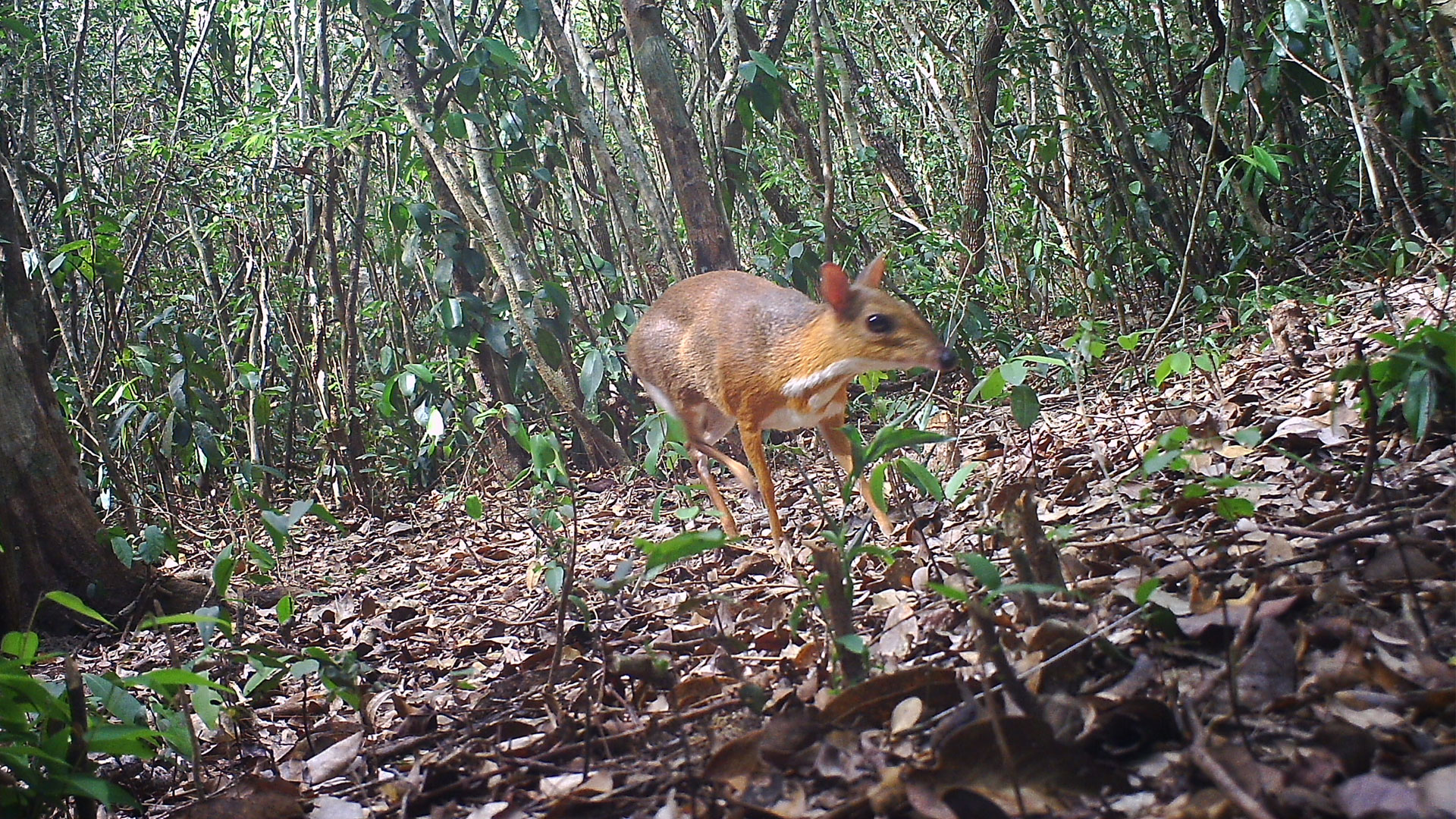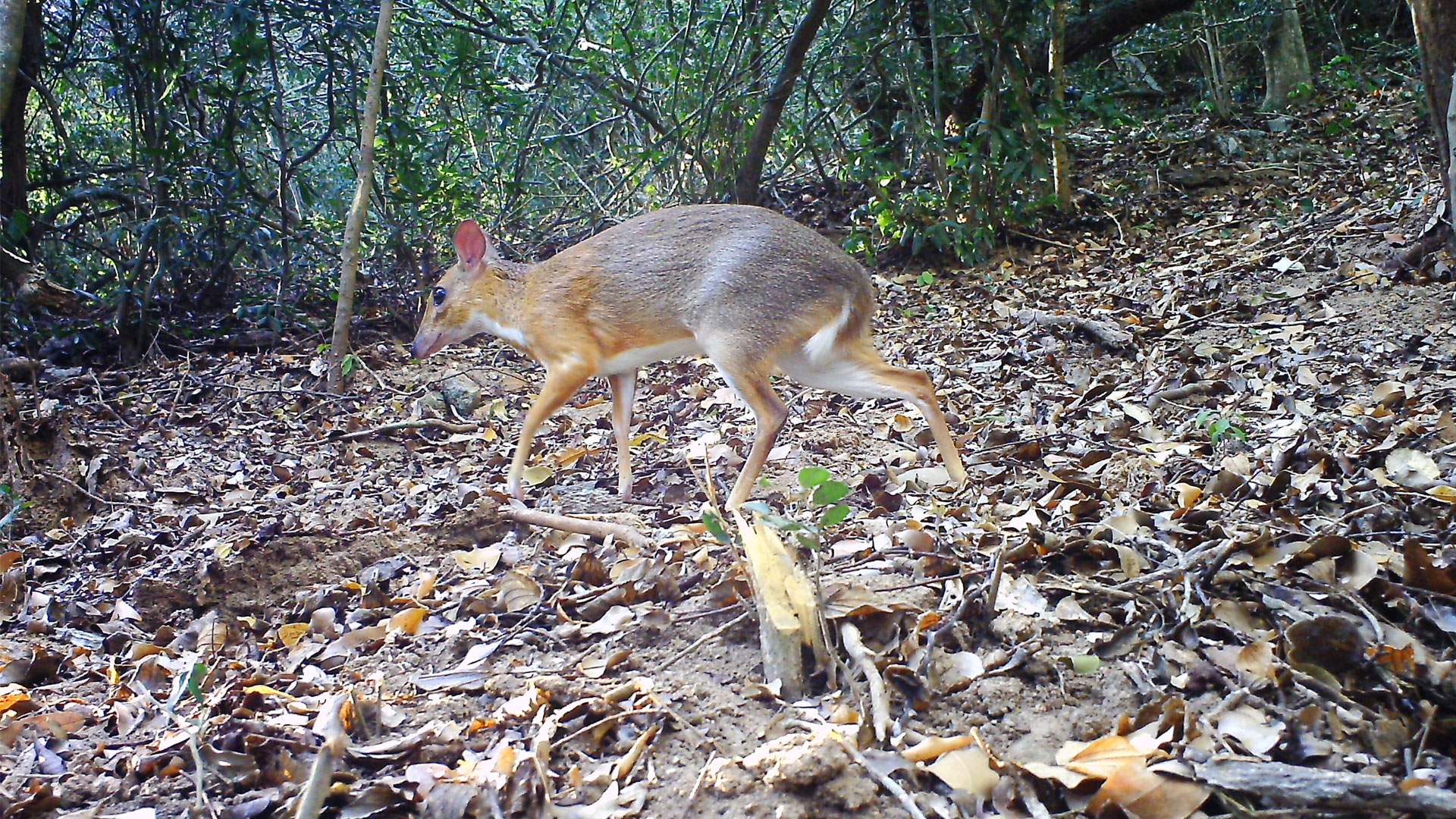Your zoo visits have helped to rediscover a species that was thought to be extinct! The silver-backed chevrotain (Tragulus versicolor), also known as the Vietnam mouse-deer, was lost to the world for close to 30 years until passionate conservationists set out on an intrepid journey to look for them.
In 2017, Auckland Zoo was approached by conservation scientists at Global Wildlife Conservation and the Ho Chi Minh University of Science in Vietnam to help fund their efforts to locate one of the world’s smallest ungulate species, and one that science had all but forgotten. We were able to assist them with this project through Auckland Zoo’s Small Grants Programme, which provides support for projects with a clear conservation value and is entirely funded by your zoo visits and donations.









